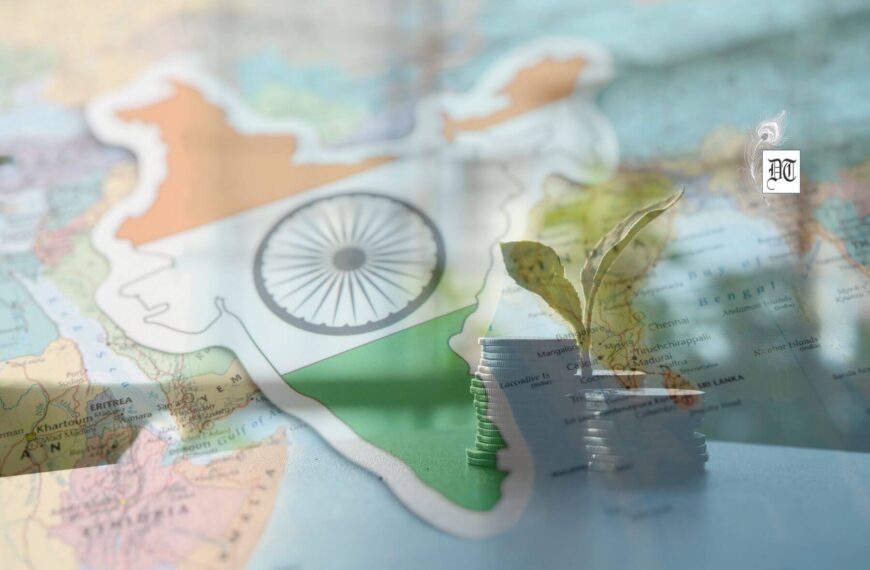The moot issue is whether the latest support would help mills, burdened as they were with payment arrears of a humongous Rs. 13,899 crore to the growers as on the third week of March 2018 even as the subsidy goes directly into the bank account of the growers. Here’s a report, for Different Truths.
In the run-up to the Karnataka assembly polls, with the state as one of the few largest producers of sugarcane in the country, the Union Cabinet approved financial assistance of Rs 5.50 per quintal (100 kg) for cane crushed by sugar mills in the extant 2017-18 sugar year (October-September) by way of production subsidy. The subvention is to be directly credited to the bank account of the cane growers, as they have not been the recipient of the “fair and remunerative price” (FRP) for sugarcane fixed by the Centre.
The moot issue is whether the latest support would help mills, burdened as they were with payment arrears of a humongous Rs 13,899 crore to the growers as on the third week of March 2018 even as the subsidy goes directly into the bank account of the growers. It may be noted that in a written answer to a query in the Lok Sabha on March 27, 2018, Minister of State for Consumer Affairs, Food and Public Distribution, C.R. Chaudhuary said that out of aggregate cane dues payable to farmers as on March 21, 2018 of Rs 55,553 crore for 2017-18 sugar season, a sum of Rs 41,654 crore has been cleared and Rs 13,899 crore is pending. He also contended that due to excessive production, estimates during the current sugar year has been re-estimated at 295.07 lakh tone on the basis of the latest assessment by major sugar producing states. This overproduction, triggering a glut of supply, meant a distinct downtrend of sugar price, which is impairing the liquidity position of the mills and their timely clearance of cane dues to growers. Hence the latest salvo to salvage the sugar industry by the Cabinet, which besides being voter-centric, is a tiny drop of solution in the oceanic woes of the industry, which is buffeted by several complex factors as the politics and economics of the industry remain enmeshed. The production subsidy would prune mills’ dues by only about Rs 1,600 crore.
The authorities argued that in a bid to arrest the downslide in sugar prices and to ameliorate the liquidity position of sugar mills enabling them to clear cane dues of the farmers’ multiple measures have been initiated in recent months. These include, among others, increased import duty on sugar from 50 to 100 percent, imposition of stock holding limits on sugar mills for two months and removal of customs duty on export of sugar to find a way for surplus output in the overseas markets.
Interestingly, it needs to be noted that the statement following the latest Cabinet decision that the Rs 5.50 per quintal assistance is purported “to help sugar mills to clear cane dues of farmers” is a candid confession of the authorities on the entrenched difficulty of factories to disburse the FRP for growers. Besides, such assistance “will be adjusted against the cane price payable (based on) FRP”. This is tantamount to ensuring mills the elbow-room in disbursing even the minimum cane price under the law. It is germane to note that the Rangarajan Committee on the regulation of sugar sector has favoured that there should be a sharing of the revenues/value created in the sugarcane value chain between the farmers and the millers in a fair and equitable way.
As recommended by the Committee under the revenue sharing formula (RSF) for cane price payments, 75 percent of sugar value or 70 percent of the value of sugar and its byproducts should be disbursed to farmers towards sugarcane price. But, farmers should be ensured payment of at least fair and remunerative price (FRP) when cane price share under RSF is less than FRP. But when sugar price has a free fall as is the case now, it is easier said than done to disburse the FRP, given the constraints under which the industry is operating in a high-cost economy! It is small wonder that mill owners bemoan the fact that the authorities compel them to pay the FRP when nobody is paying the minimum support price for other crops! They ask the pointed query that when pulses were being sold below MSP, none is bothered but sugar mills are like captive and caged parrots as they remain limited in numbers and easily identifiable entities across the country!
Be that as it may, there is no dearth of development funds for safeguarding the interests of the sugar industry in a holistic fashion. Till the advent of GST in July last year, a cess was gleaned under the Sugar Cess Act, 1982 as excise duty for the purpose of a Sugar Development Fund (SDF). In order to enable mills to pay the FRP to farmers notwithstanding lower market prices for sugar as frequently supervened, the Commission for Agricultural Costs and Prices (CACP) has been suggesting a sugar price stabilization fund (SPSF) under the Sugar Development Fund (SDF). A couple of years ago, the ceiling on the amount of cess was enhanced from Rs 25 to Rs 200 per quintal to facilitate the government to cope with expenses incurred on interest subvention based on soft loans extended to industry, export fillips, production assistance and liquidation of arrears of cane dues.
With the GST kicking in, over and above the GST at 5 percent on sugar, the GST Council has set up a group of State Finance Ministers, headed by Assam’s Himanta Biswa Sarma, to impose a special cess on sugar (SOS). The proposal floats the imposition of cess at a rate not exceeding three rupees per kilogram on the supply of sugar. Once the GST Council gets the report, it might authorise the Centre to fix the effective rate of cess within the proposed ceiling. In order to preempt the complexities of a multi-stage taxation, the proposed cess would be a single-point levy, slapped on supplies from sugar mills and on imports only. Even as the new cess would make the GST not a simple and good tax, it is welcome as a disincentive to splurge on sugar as it is an unwholesome and unhealthy item in the consumption basket!
It is also a paradox that a water-guzzler crop like cane is being harvested in a chronically water-scarce state like Maharashtra, Tamil Nadu and partly Karnataka in large acreage, predominantly for profit motive that has been actuated by political classes that had developed a vested interest in extracting honey from this industry for its own nefarious designs down the years. It is also another unedifying saga that India, albeit its avowed advantage of the demographic dividend, is also emerging as the home to the swathe of the diabetic and heart patients in young and middle-age populace! Even as advanced nations like Britain is mulling over sugar tax to tame its aging population’s obesity and cardio-vascular problem, is it not time that India woke up to the ill-effects of white sweetener? This will partly solve the mills’ problem, largely make the country healthy and render the farmers return to grow less water-guzzling but more salubrious crops over the long haul.
G. Srinivasan
©IPA Service
Photo from the Internet





 By
By

 By
By
 By
By